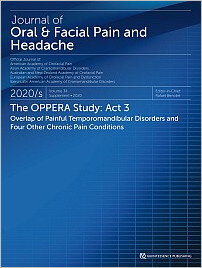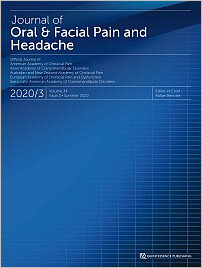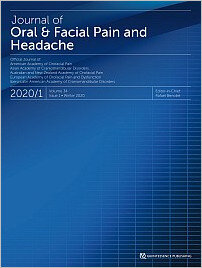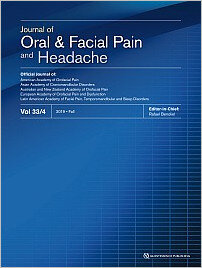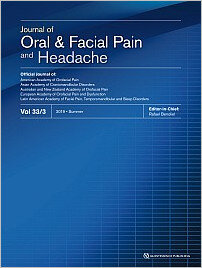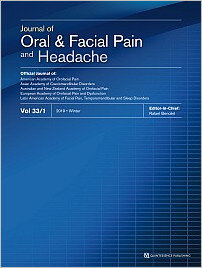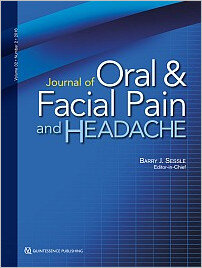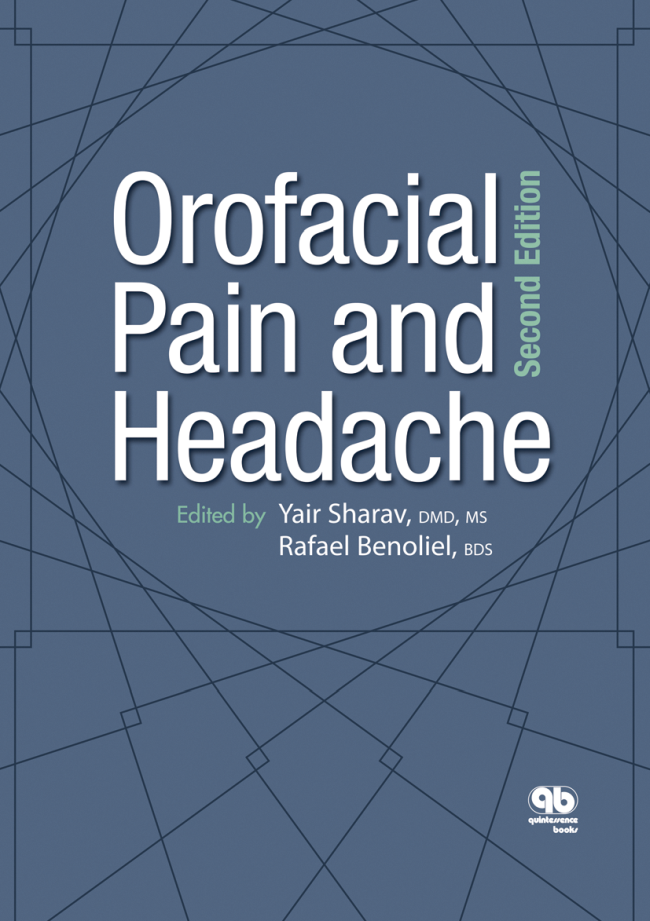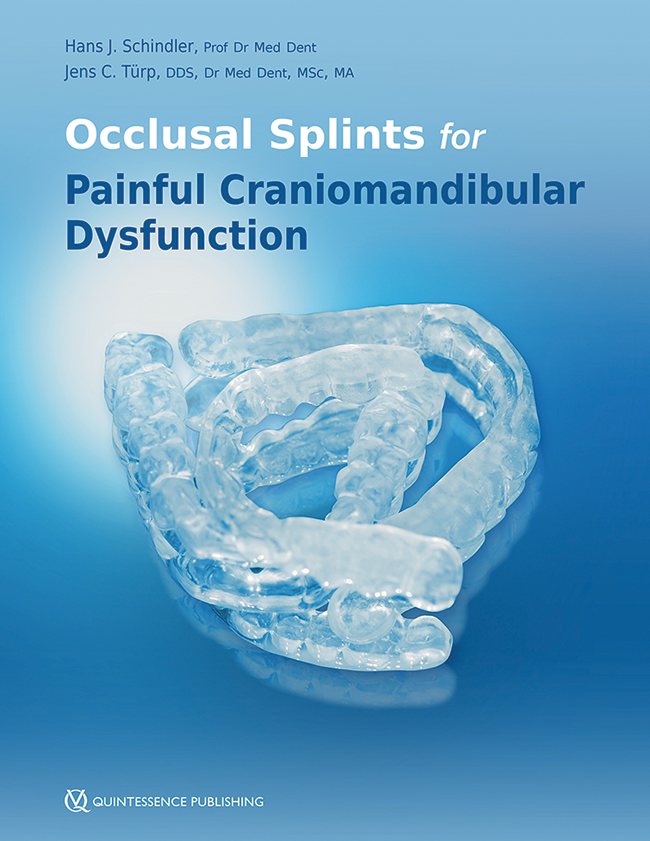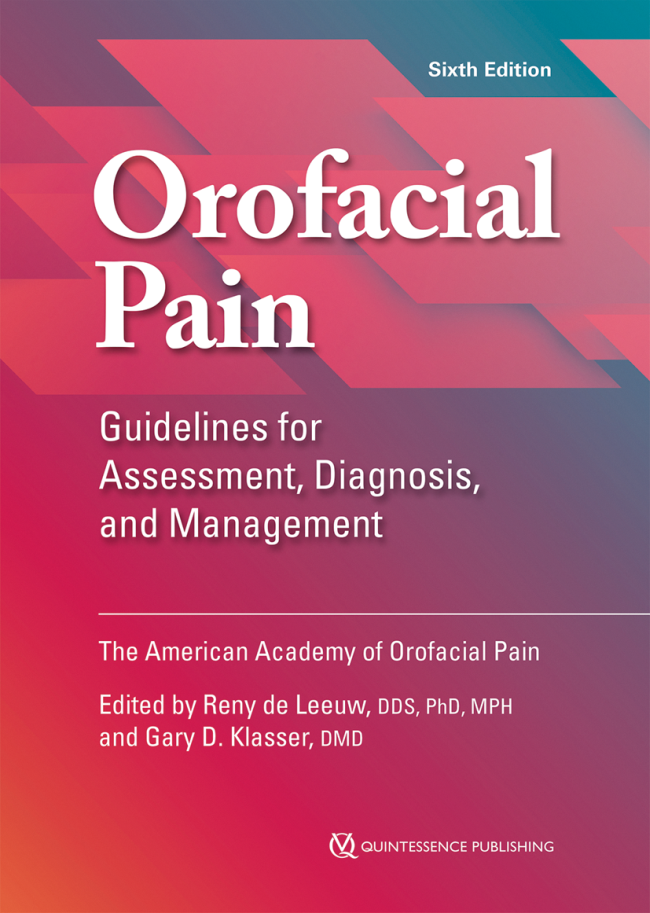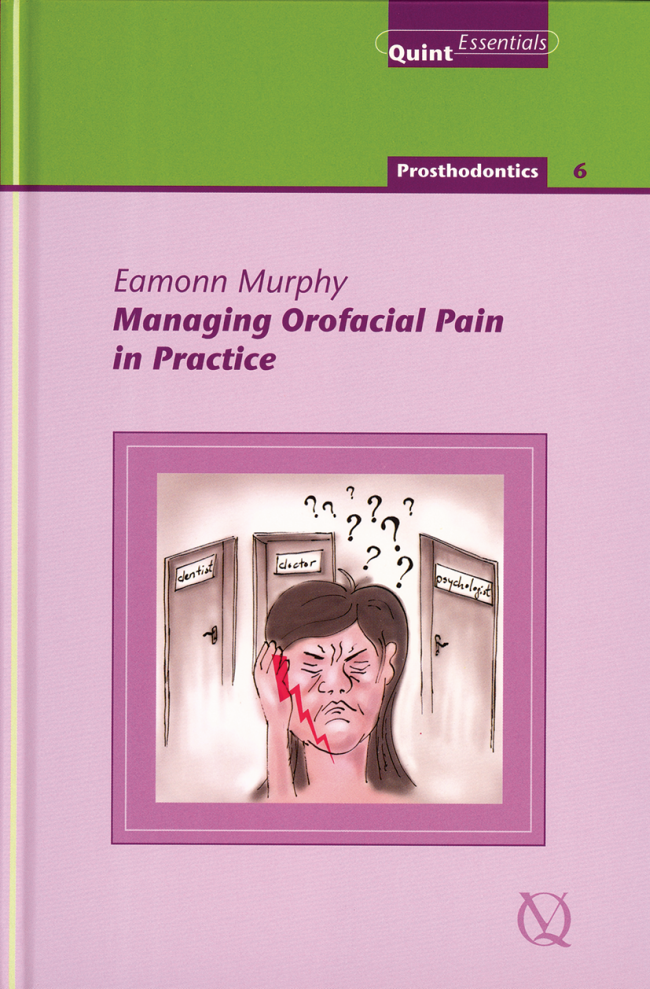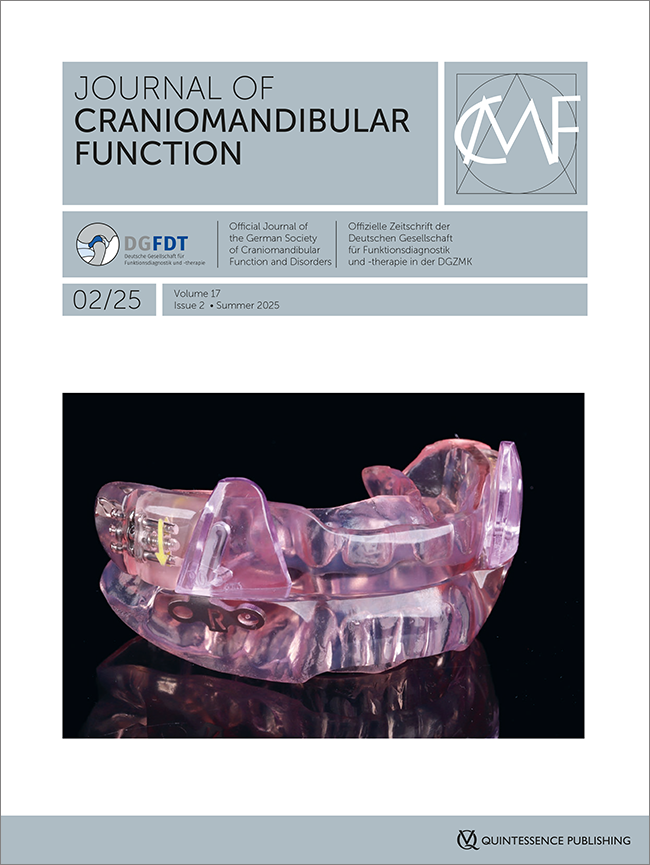SupplementSeiten: s3-s5, Sprache: EnglischLeResche, Linda / Korff, Michael VonCommentary 1: IntroductionSupplementSeiten: s6-s8, Sprache: EnglischSvensson, Peter / Exposto, FernandoCommentary 2SupplementSeiten: s9-s10, Sprache: EnglischStohler, Christian S.Commentary 3SupplementSeiten: s11, Sprache: EnglischBenoliel, RafaelCommentary 4SupplementSeiten: s12-s14, Sprache: EnglischOhrbach, Richard / Fillingim, Roger B. / Greenspan, Joel D. / Maixner, William / Sanders, Anne E. / Sharma, Sonia / Slade, Gary D.Authors' ResponseSupplementSeiten: s15-s28g, Sprache: EnglischSlade, Gary D. / Greenspan, Joel D. / Fillingim, Roger B. / Maixner, William / Sharma, Sonia / Ohrbach, RichardAims: To assess cohort retention in the OPPERA project and to compare the degree of overlap between pairs of chronic overlapping pain conditions (COPCs) using a cross-sectional analysis of data from 655 adults who completed followup in the OPPERA study.
Methods: Subjects were classified for the absence or presence of each of the five COPCs. The extent of overlap beyond chance was quantified using odds ratios, which were calculated using binary logistic regression models.
Results: While overlap was the norm, its magnitude varied according to COPC: 51% of people with headache had one or more overlapping COPCs, and this proportion increased to 90% for people with fibromyalgia. The degree of overlap between pairs of COPCs also varied considerably, with odds ratios being greatest for associations between musculoskeletal conditions (fibromyalgia, temporomandibular disorders, and low back pain) and less pronounced for overlap involving headache or IBS. Furthermore, univariate associations between some pairs of COPCs were nullified after adjusting for other COPCs.
Conclusion: There was greater overlap between fibromyalgia and either temporomandibular disorders or low back pain than between other pairs of COPCs. While musculoskeletal conditions exhibited some features that could be explained by a single functional syndrome, headache and irritable bowel syndrome did not.
Schlagwörter: back pain, fibromyalgia, irritable bowel syndrome, temporomandibular disorder
SupplementSeiten: s29-s42ad, Sprache: EnglischOhrbach, Richard / Sharma, Sonia / Fillingim, Roger B. / Greenspan, Joel D. / Rosen, Jonathan D. / Slade, Gary D.Aims: To describe the pain characteristics of five index chronic overlapping pain conditions (COPCs) and to assess each COPC separately in order to determine whether the presence of comorbid COPCs is associated with bodily pain distribution, pain intensity, pain interference, and high-impact pain of the index COPC.
Methods: Data were from a convenience sample of 655 US adults, of whom 388 had one or more of the five COPCs: painful temporomandibular disorders, headache, low back pain, irritable bowel syndrome, and/or fibromyalgia. Data were collected using pain location checklists and self-report questions regarding pain attributes. The contributions of the COPCs to reported pain intensity and interference were assessed using multivariable regression models.
Results/Conclusion: Heat maps from a pain body manikin illustrated that very little of the body was pain free within these COPCs. All pain attributes were the most severe for fibromyalgia and the least severe for irritable bowel syndrome. Within each index COPC, pain intensity, pain interference, and the proportion of participants with high-impact pain increased with each additional comorbid COPC up to four or more COPCs (including the index COPC) (P .01). Highimpact pain associated with an index COPC was influenced by type and number of comorbid COPCs, largely in a gradient-specific manner.
Schlagwörter: back pain, chronic overlapping pain conditions, comorbidity, fibromyalgia, headache, irritable bowel syndrome, measurement, pain, pain-related disability, TMD
SupplementSeiten: s43-s56b, Sprache: EnglischGreenspan, Joel D. / Slade, Gary D. / Rathnayaka, Nuvan / Fillingim, Roger B. / Ohrbach, Richard / Maixner, WilliamAims: To investigate associations between experimental pain sensitivity and five chronic pain conditions among 655 participants in the OPPERA study.
Methods: Quantitative sensory tests were used to measure sensitivity to three modalities of nociception: blunt pressure pain, mechanical pinprick pain, and thermal heat pain. Participants were also classified according to the presence or absence of five chronic pain conditions: temporomandibular disorders, headache, low back pain, irritable bowel syndrome, and fibromyalgia.
Results: Univariate analyses found each modality to be significantly associated with at least one pain condition, most consistently for pressure pain sensitivity (8 of 15 instances) and least consistently for heat pain sensitivity (5 of 35 instances). Yet, multivariable analyses that evaluated the independent contributions of all five pain conditions found few significant associations (12 of 75 instances). Instead, pain sensitivity consistently varied according to the total number of pain conditions a person experienced, implying that the combination of pain conditions influences each nociceptive modality.
Conclusion: When evaluating nociceptive sensitivity in a chronic pain patient, comorbid pain conditions should be considered, as the more salient feature underlying sensitivity is likely the number rather than the type(s) of pain conditions.
Schlagwörter: chronic overlapping pain conditions, heat pain, pinprick pain, pressure pain, quantitative sensory testing
SupplementSeiten: s57-s72e, Sprache: EnglischSharma, Sonia / Slade, Gary D. / Fillingim, Roger B. / Greenspan, Joel D. / Rathnayaka, Nuvan / Ohrbach, RichardAims: To investigate whether TMD-related characteristics are indeed specific to TMD or whether they are also associated with other chronic overlapping pain conditions (COPCs).
Methods: In this cross-sectional study, 22 characteristics related broadly to TMD (eg, jaw kinesiophobia, overuse behaviors, and functional limitation) were measured in 178 painful TMD cases who were also classified according to four COPCs: headache, low back pain, irritable bowel syndrome, and fibromyalgia. Differences in mean subscale scores were compared according to individual chronic pain conditions and according to number of COPCs.
Results: Headache, low back pain, irritable bowel syndrome, and fibromyalgia were each associated (P .05) with higher values of at least one TMD-relevant characteristic. In the multivariable analysis, TMD was independently associated with 20 of the 22 characteristics (P .01), and other COPCs were associated variably. A critical threshold existed between the number of COPCs and TMD characteristics: all characteristics were elevated for subjects with ≥ 3 COPCs (P ≤ .01).
Conclusion: The overlap between COPCs and characteristics typically regarded as specific to painful TMD has implications for treatment targeted at both the local TMD condition and the broader pain disorder underlying the COPC(s). In TMD patients, the overall burden of pain from COPCs may create a shift in the pain-processing systems that underlie these TMD-relevant characteristics.
Schlagwörter: chronic overlapping pain conditions, comorbidity, pain, measurement, TMD
SupplementSeiten: s73-s84b, Sprache: EnglischSanders, Anne E. / Greenspan, Joel D. / Fillingim, Roger B. / Rathnayaka, Nuvan / Ohrbach, Richard / Slade, Gary D.Aims: To quantify the contributions of atopic disorders, sleep disturbance, and other health conditions to five common pain conditions.
Methods: This crosssectional analysis used data from 655 participants in the OPPERA study. The authors investigated the individual and collective associations of five chronic overlapping pain conditions (COPCs) with medically diagnosed atopic disorders and self-reported sleep disturbance, fatigue, and symptoms of obstructive sleep apnea. Atopic disorders were allergies, allergic rhinitis, atopic dermatitis, allergic asthma, urticaria, allergic conjunctivitis, and food allergy. Logistic regression models estimated odds ratios as measures of association with temporomandibular disorders, headache, irritable bowel syndrome, low back pain, and fibromyalgia. Measures of sleep and atopy disorders were standardized to z scores to determine the relative strength of their associations with each COPC. Sociodemographic characteristics and body mass index were covariates. Random forest regression analyzed all variables simultaneously, computing importance metrics to determine which variables best differentiated pain cases from controls.
Results: Fatigue and sleep disturbance were strongly associated with each COPC and with the total number of COPCs. An increase of one standard deviation in fatigue or sleep disturbance score was associated with approximately two-fold greater odds of having a COPC. In random forest models, atopic disorders contributed more than other health measures to differentiating between cases and controls of headache, whereas other COPCs were best differentiated by measures of fatigue or sleep.
Conclusion: Atopic disorders, previously recognized as predictors of poor sleep, are associated with COPCs after accounting for sleep problems.
Schlagwörter: allergy, atopy, fatigue, sleep disturbance, symptom cluster
SupplementSeiten: s85-s100a, Sprache: EnglischFillingim, Roger B. / Ohrbach, Richard / Greenspan, Joel D. / Sanders, Anne E. / Rathnayaka, Nuvan / Maixner, William / Slade, Gary D.Aims: To characterize psychologic functioning across five chronic overlapping pain conditions (COPCs)—temporomandibular disorders, fibromyalgia, low back pain, headache, and irritable bowel syndrome—and their overlaps.
Methods: Participants were 655 adults in the OPPERA study. Psychologic variables were standardized in separate logistic regression models to compare their relative strength of association with each COPC. Random forest regression was used to explore the association of all psychologic measures with COPCs simultaneously. Linear regression analyses examined whether the count of COPCs was associated with psychologic measures.
Results: In univariate and multivariable analyses, measures of somatic symptom burden showed the strongest associations with individual COPCs and with the number of COPCs. Additional psychologic variables that showed significant associations with individual COPCs and their overlap included negative mood, perceived stress, and pain catastrophizing.
Conclusion: These findings highlight the importance of psychologic functioning in the assessment and management of these overlapping pain conditions.
Schlagwörter: chronic overlapping pain conditions, headache, low back pain, pain assessment, psychological factors, temporomandibular disorder





